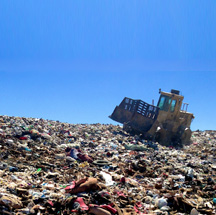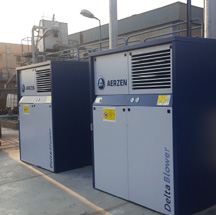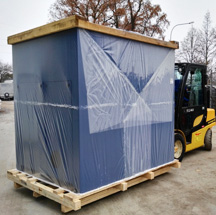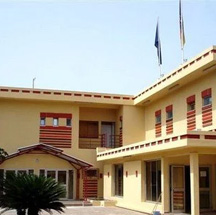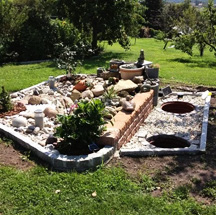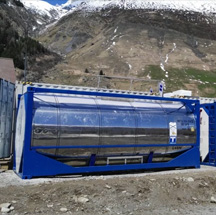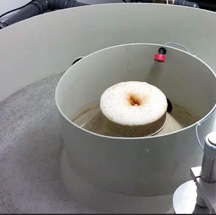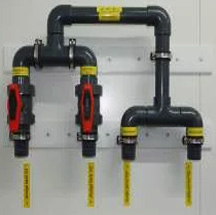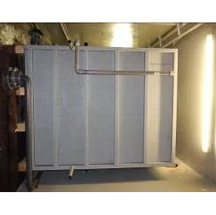HOME | WASTEWATER & RECYCLING | INDUSTRIAL WASTEWATER TREATMENT | WINE INDUSTRY
ClearFox are specialists in the design and manufacture of plug and play modular solutions for winery wastewater.
Our technical ability and experience make us the best choice for your project.
We have a range of process technologies that can be combined in a modular arrangement to deal with any type of distillery wastewater. These include pre-treatment, dissolved air flotation, biological treatment, clarifiers, disinfection. We can also incorporate ultrafiltration to allow the wastewater to be recycled and used as process water.
ClearFox modular industrial wastewater solutions have the following advantages:
- Low operation costs
- Modular
- Automatic operation
- Low purchase price
- Process and effluent guarantees
Application Description:
Winery wastewater management is important to the business and environmental performance of a winery and involves amongst others, a ‘fit for purpose’ treatment of winery wastewaters (eg. Irrigation or Processing water) and the reduction of environmental risks from wastewater discharges. Wastewater loads vary seasonally with high fluctuation and peaks followed by long lull periods.
During these lull periods, the wastewater can be highly contaminated and due to the poor nutrient situation, often only treatable with additional measures.
Wastewater composition:
The composition of wastewater from the wineries are characterised by unused grapes and juice, winemaking remnants such as alcohol and sugars, inorganic salts, organic compounds, yeast, bacteria and chemicals such as cleaning agents.
Wastewater Characteristics:
The Wastewater characteristics vary from winery to winery and are significantly influenced by climate and wine type produced. Unique characteristics are the “high-strength” winery process wastewater (i.e. having more than 7,000 mg/L of BOD, with a TSS of over 3,000 mg/L).
Factors to consider are:
- Chemical (or Biochemical) Oxygen Demand (COD and BOD)
- Total suspended solids (TSS) and total dissolved solids (TDS)
- Salts such as sodium (Na), calcium (Ca), magnesium (Mg), and potassium (K)
- Salinity (electrical conductivity)
- Nutrients such as nitrogen and phosphorus
- Acidity or alkalinity (pH)
- Dissolved oxygen levels (DO)
Wastewater categories:
The three major categories according to their origin and composition are:
1.Processing water:
Wastewater originates from the cleaning process of the raw material delivered and spillage within the winery. A high organic load indicates product (wine/grape juice loss, which is undesirable both economically and for the wastewater treatment.
2.Cleaning wastewater:
Cleaning wastewater usually comes from washing equipment which is in direct contact with the products. These effluents are in large quantities and are highly polluted, include cleaning agents along with wine or grape juice suspended solids, thus requiring further treatment.
3.Sanitary wastewater:
Sanitary wastewater is found in lavatories, shower rooms, etc. Sanitary wastewater is similar in composition to municipal wastewater and is generally piped directly to sewage works, but it can be used as a nitrogen source for unbalanced effluents before a secondary aerobic treatment.
Contact us for a free quotation
Do you have a question or need more information about a sewage treatment plant? We shall be happy to develop a suitable solution to your specific requirements.
Please call us on 01629 363311 or use the form below.
CONTACT US
Industrial Wastewater Treatment
Examples of applications that have the potential to generate waste water include, but are not limited to the following industries:
- Food processing
- Agricultural processes
- Breweries
- Wineries
- Mining
- Wash water from any activity and process effluent
Clearfox is a recognised market leader in the design, manufacture and supply of industrial wastewater treatment plants and industrial wastewater treatment process development. We provide intelligent solutions for industrial wastewater treatment:
- ensuring that they meet the stringent discharge compliances
- to recover and recycle water that can be reused in:
- cooling towers
- irrigation
- washing water
- process water
- to recover and recycle water from municipal sewage



